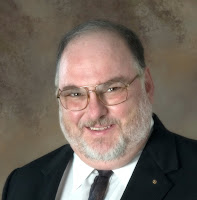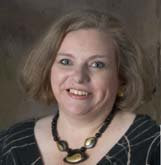More than Sun Block Required to Protect Kids While Mowing Lawns
National Medical Societies’ Safety Tips Prevent Lawn Mower Injuries
June is National Safety Month
Chicago – Protecting children during summer activities conjures up thoughts of bike helmets, knee pads, and sun block. However, during the summer months, mowing the lawn can be as routine for some children as riding a bike and can be dangerous if proper safety precautions are not taken. In fact, nearly 210,000 people – approximately 16,200 of them children under age 19 – were treated in doctors’ offices, clinics and emergency rooms for lawn mower-related injuries in 2007, the U.S. Consumer Product Safety Commission reports.
To help prevent injuries, the American Society for Reconstructive Microsurgery (ASRM), the American Academy of Orthopaedic Surgeons (AAOS), the American Society of Plastic Surgeons (ASPS) and the American Academy of Pediatrics (AAP) have teamed up to educate parents, adults and children about the importance of lawn mower safety during National Safety Month, June 2008.
“Parents need to understand that lawnmowers can cause terrible devastating injuries to children's hands, feet or faces, which can impact the rest of their lives,” said ASRM President Neil Jones, MD. “The tragedy is that most of these injuries are totally preventable by following some simple precautions.”
The ASRM, AAOS, ASPS and AAP offer the following tips to help prevent lawn mower-related injuries:
- Children should be at least 12 years old before they operate any lawn mower, and at least 16 years old for a ride-on mower.
- Children should never be passengers on ride-on mowers.
- Always wear sturdy shoes while mowing – not sandals.
- Young children should be at a safe distance from the area you are mowing.
- Before mowing, pick up stones, toys and debris from the lawn to prevent injuries from flying objects.
- Always wear eye and hearing protection.
- Use a mower with a control that stops it from moving forward if the handle is released.
- Never pull backward or mow in reverse unless absolutely necessary – carefully look for others behind you when you do.
- Start and refuel mowers outdoors – not in a garage. Refuel with the motor turned off and cool.
- Blade settings should be set by an adult only.
- Wait for blades to stop completely before removing the grass catcher, unclogging the discharge chute, or crossing gravel roads.
“Serious orthopaedic trauma can be sustained while operating a lawn mower,” said AAOS President Tony Rankin, MD. “However, by following a few simple safety tips, devastating injuries may be prevented.”
Many lawn mower-related injuries require a team of physicians from various specialties to properly repair them. Often, patients must endure painful reconstructive operations to restore form and function.
“Many children who sustain lawn mower injuries must undergo reconstructive surgery for months, sometimes years, after the initial accident,” said ASPS President Richard D’Amico, MD. “The look on parents’ faces can be truly heart wrenching. We are the physicians called to treat these devastating injuries, but would do anything to prevent them in the first place.”
“Parents want to protect their children from accidents and injuries. But every summer we see children and teens using lawnmowers in an unsafe manner,” said AAP President Renee Jenkins, MD. “It is our job as pediatricians to help get information to parents about how to prevent injuries that are common during summer months, and that includes injuries from lawnmowers.”
The American Society for Reconstructive Microsurgery is a not-for-profit organization consisting primarily of orthopaedic and plastic surgeons that perform microsurgery and other complex reconstructions. With more than 500 members, the ASRM mission is to promote, encourage and advance the art and science of microsurgical and other complex reconstructions. The ASRM serves as a forum for teaching, research and free discussion of microsurgical methods and principles. For more information, please visit www.microsurg.org.
With more than 30,000 members, the American Academy of Orthopaedic Surgeons (www.aaos.org) is the premier not-for-profit organization that provides education programs for orthopaedic surgeons and allied health professionals, champions the interests of patients and advances the highest quality musculoskeletal health. Orthopaedic surgeons and the Academy are the authoritative sources of information for patients and the general public on musculoskeletal conditions, treatments and related issues. An advocate for improved patient care, the Academy is participating in the Bone and Joint Decade (www.usbjd.org) – the global initiative in the years 2002-2011 – to raise awareness of musculoskeletal health, stimulate research and improve people’s quality of life.
The American Society of Plastic Surgeons is the largest organization of board-certified plastic surgeons in the world. Representing more than 6,700 physician members, the Society is recognized as a leading authority and information source on cosmetic and reconstructive plastic surgery. ASPS comprises more than 90 percent of all board-certified plastic surgeons in the United States. Founded in 1931, the Society represents physicians certified by The American Board of Plastic Surgery or The Royal College of Physicians and Surgeons of Canada. For more information, please visit www.plasticsurgery.org.
The American Academy of Pediatrics is an organization of 60,000 primary care pediatricians, pediatric medical subspecialists and pediatric surgical specialists dedicated to the health, safety and well being of infants, children, adolescents and young adults. (www.aap.org)




